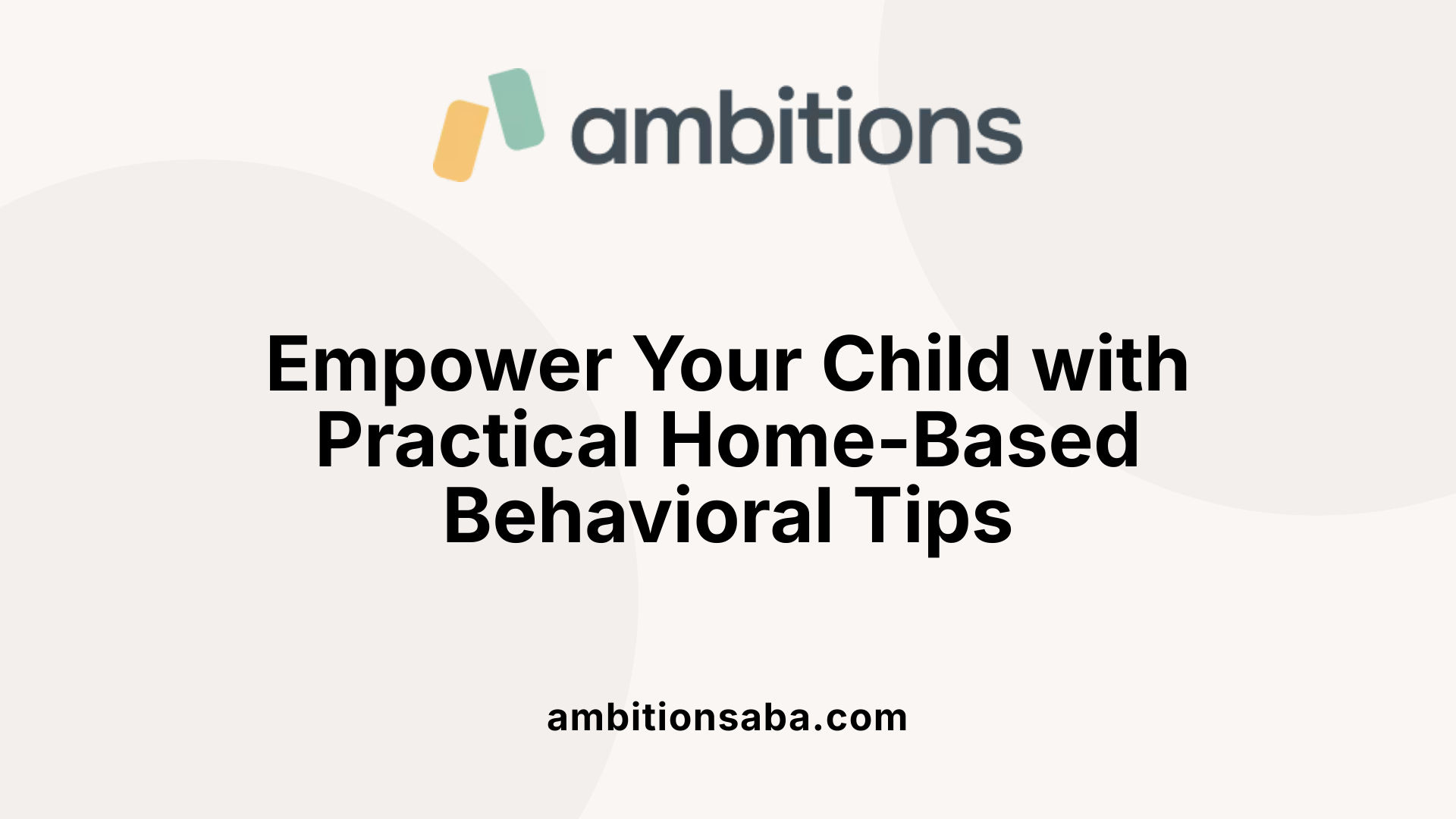Facilitating Smooth Integration: Transitions in Autism Therapy Settings
Understanding Anxiety in Children with Autism
Anxiety is a common challenge among children with autism spectrum disorder (ASD), affecting up to 40% of this population. Symptoms may manifest as increased repetitive behaviors, rigidity in routines, heightened sensory sensitivities, and difficulty with social interactions. Managing anxiety in these children requires a nuanced approach that incorporates behavioral strategies tailored to their unique needs. This article explores effective therapies and methods, including Applied Behavior Analysis (ABA) and Cognitive Behavioral Therapy (CBT), as well as tools parents and professionals can use to support children in reducing anxiety and improving daily functioning.
Applied Behavior Analysis (ABA) Therapy: Foundations and Benefits

What is Applied Behavior Analysis (ABA) therapy and how is it used to support individuals with autism?
Applied Behavior Analysis (ABA) therapy is a science-based approach designed to support individuals with autism by improving their social, communication, and learning skills. It focuses on understanding behaviors through environmental factors and uses evidence-based techniques to promote positive behaviors while minimizing harmful or unhelpful ones. Key methods include positive reinforcement, prompting, and careful data collection to track progress.
ABA therapy is highly personalized. Programs are tailored to each child’s unique needs and often involve structured sessions, naturalistic learning opportunities, and active family participation. This flexibility allows therapists to target specific objectives such as language development, social interaction, or daily living skills.
Early and intensive ABA interventions have demonstrated significant developmental improvements. These include enhanced communication, increased social engagement, and greater independence in routine tasks. ABA is broadly recognized as a leading treatment for autism spectrum disorder by numerous health organizations and supported by decades of research.
Personalization and goals of ABA
ABA therapy focuses on individual goals that align with improving quality of life. Typical targets include:
- Increasing functional communication and social skills
- Reducing behaviors that interfere with learning or safety
- Teaching daily living tasks for independence
- Promoting flexibility in routines and adaptability
Each treatment plan is developed after a thorough behavioral assessment and continuously adjusted based on the child’s progress.
Techniques used in ABA
Some common ABA techniques include:
- Discrete Trial Training (DTT): Step-by-step instructions with rewards for correct responses, used in a controlled setting.
- Pivotal Response Training (PRT): Taking place in natural environments, PRT focuses on critical skills like motivation and initiating communication.
- Positive reinforcement to encourage desired behaviors
- Prompting and fading to guide learning
- Data collection to objectively monitor improvements
These techniques are designed to make learning clear, consistent, and rewarding for children.
Effectiveness and benefits of ABA for children with autism
Research shows that ABA is effective in promoting meaningful behavioral changes. Benefits include:
- Improved language and social skills
- Enhanced ability to cope with daily routines and changes
- Reduction in problematic behaviors
- Increased independence and self-care abilities
ABA is often integrated with other therapies such as speech or occupational therapy to provide a comprehensive treatment approach.
Who typically provides ABA therapy services?
ABA services are usually delivered by a team of qualified professionals, including:
- Board-Certified Behavior Analysts (BCBAs), who design and oversee treatment plans
- Registered Behavior Technicians (RBTs) and other certified behavior technicians, who provide direct therapy sessions
- Assistants like Board-Certified Assistant Behavior Analysts (BCaBA) who support therapy under supervision
These experts tailor and deliver ABA programs in settings such as homes, clinics, or schools, and often collaborate closely with families to ensure skill generalization.
| Aspect | Description | Additional Details |
|---|---|---|
| Definition | Scientific approach to behavior modification | Focus on increasing functional skills in autism |
| Personalization | Individualized goals based on assessments | Emphasis on language, social skills, daily living |
| Techniques | DTT, PRT, reinforcement, prompting, data collection | Naturalistic and structured settings |
| Effectiveness and Benefits | Improves communication, social skills, reduces problematic behaviors | Supported by decades of research; gold standard treatment |
| Providers | BCBAs, RBTs, BCaBAs, behavior technicians | Work in home, clinic, schools with family collaboration |
Applied Behavior Analysis therapy remains a cornerstone of autism intervention, offering structured, evidence-based strategies that empower children to reach their fullest potential.
Cognitive Behavioral Therapy (CBT) and Exposure Therapy for Anxiety

CBT as an Effective Psychological Therapy for Anxiety in Children with Autism
Cognitive Behavioral Therapy (CBT) is a well-supported, short-term treatment particularly effective for reducing severe anxiety in children with autism spectrum disorder (ASD), especially those who have some verbal abilities. Research shows CBT outperforms other talk therapies in managing anxiety symptoms common in this group, such as obsessions, phobias, and heightened sensory sensitivities. It is designed to help children modify problematic thoughts and behaviors, empowering them to better handle emotional distress.
How CBT Helps Children Identify and Challenge Fears
In CBT sessions, children learn to recognize the origins of their fears and anxieties by exploring the relationships between their thoughts, feelings, and behaviors. This deliberate approach guides children to challenge their anxious perceptions against real evidence, enabling them to gradually shift toward healthier coping mechanisms. Therapists often employ individualized strategies, which can include individual, group, or family therapy and parent coaching, tailoring the process to the child’s needs.
Role of Exposure Therapy in Reducing Anxiety
Exposure therapy, a key component of CBT, helps children confront their fears progressively and systematically. By gradually facing anxiety-provoking situations in a safe, supportive context, children gain confidence and reduce avoidance behaviors. This step-by-step process helps lessen anxiety and fosters a sense of safety and control.
Parental Involvement in CBT
Parental participation plays a crucial role in the success of CBT for children with autism. Parents and caretakers, with professional guidance, can apply CBT and exposure techniques at home to reinforce skills learned during therapy sessions. High parent involvement is essential to generalize the child’s progress across different environments, making therapeutic gains more lasting and effective.
Use of Medication Alongside Therapy
While CBT remains the primary treatment for anxiety in children with autism, medication may sometimes be used as a complementary approach to manage severe symptoms or co-occurring conditions. However, medications do not treat the core symptoms of ASD but can help address anxiety, agitation, or related psychological challenges, often enhancing a child’s ability to engage more fully in therapy.
Practical Behavioral Strategies for Parents and Caregivers

Implementing CBT Techniques at Home
Parents and caregivers play an essential role in supporting children with autism and anxiety by using cognitive behavioral therapy (CBT) techniques guided by professionals. This often includes helping children identify and challenge anxious thoughts and gradually face fears through planned exposure activities. Parental involvement ensures the skills learned during therapy sessions generalize to daily life, increasing their effectiveness.
Use of Social Stories, Visual Schedules, and 'If-Then' Boards
For children less suited to traditional CBT, behavioral strategies such as social stories, visual schedules, and 'if-then' boards provide structure and predictability. Social stories explain social situations and appropriate reactions, while visual schedules outline daily routines, reducing uncertainty. 'If-then' boards help children understand consequences and choices in an easily understandable format, thereby managing anxiety and promoting desired behaviors.
Creating Sensory Toolboxes and Scheduling Quiet Times
Managing sensory overload is crucial in reducing anxiety. Parents can assemble sensory toolboxes containing calming items like fidget toys, weighted blankets, or noise-canceling headphones. Scheduling quiet time for the child supports emotional regulation by providing space to decompress from overwhelming sensory stimuli and stressful situations.
Calming Techniques Including Deep Breathing, Meditation, and Distraction Activities
Teaching children calming techniques can effectively soothe anxiety. Activities such as deep breathing exercises, meditation, and progressive muscle relaxation help regulate emotions. Additionally, distraction activities like reading or engaging with sensory toys divert attention from distressing thoughts, promoting comfort and emotional balance.
Communication Aids to Provide Predictability and Reduce Anxiety
Visual aids and sequence cards assist children in anticipating daily events, which decreases anxiety caused by unpredictability. Social stories further support communication by clarifying expected social behaviors and responses, enhancing the child's understanding and confidence in social interactions.
By integrating these behavioral strategies at home, parents and caregivers can empower their children with autism to manage anxiety more effectively alongside professional support.
Specialized Behavioral Programs Addressing Anxiety in Autism

Behavioral Interventions for Anxiety in Children with Autism (BIACA)
BIACA is an individualized cognitive-behavioral therapy program tailored specifically for children with autism who experience anxiety. This modular program breaks down treatment into manageable components, allowing therapists and parents to focus on the child's most pressing anxiety symptoms. A hallmark of BIACA is the high level of parental involvement, empowering caregivers to support and reinforce therapeutic skills at home, making progress more consistent and generalizable.
Facing Your Fears (FYF) Group CBT Program
FYF is a group-based cognitive-behavioral therapy program designed to address anxiety in children with autism by promoting peer interaction and shared learning. Conducted in small groups, FYF helps children develop coping strategies in a supportive environment. The social nature of this program not only targets anxiety reduction but also enhances social skills, which are often challenging for autistic children.
Parental Involvement and Modular Treatment Approaches
Both BIACA and FYF emphasize active parental participation throughout therapy. Parents receive coaching to apply strategies outside of formal sessions, providing consistency and reinforcement. The modular design of BIACA allows customization based on each child's unique anxiety triggers and strengths, enabling a flexible yet structured treatment plan.
Evidence Base for These Programs
Research indicates that BIACA and FYF are empirically-supported interventions, specifically developed for anxiety in autistic children. Studies show these programs outperform generic talk therapies by addressing autism-specific challenges using tailored cognitive-behavioral strategies. Their use of evidence-based techniques like exposure therapy within CBT frameworks underscores their effectiveness.
Integration with Family Coaching and Group Therapy Settings
Therapists often incorporate both individual and group sessions to maximize outcomes, combining family coaching with peer-supported therapy. This integration helps children practice anxiety management in real-life social scenarios while ensuring family members are equipped to maintain therapeutic gains. Professional directories can help families find therapists experienced in these specialized programs, ensuring appropriate care.
| Program Name | Approach Type | Parental Role | Setting | Focus Areas |
|---|---|---|---|---|
| BIACA | Individualized CBT with modular design | High involvement; parent coaching | Individual sessions | Anxiety triggers, coping skills, flexibility |
| FYF | Group CBT | Parental support for home practice | Small group sessions | Anxiety reduction, social skills enhancement |
These specialized behavioral programs offer targeted, evidence-based frameworks that address anxiety in autistic children by blending therapeutic techniques with family engagement and peer support.
Supporting Social and Emotional Regulation Through Behavioral Approaches

What are Social Thinking curricula like Superflex and Zones of Regulation?
Social Thinking programs such as Superflex and Zones of Regulation help children with autism improve social awareness and manage their emotions effectively. Superflex teaches flexible thinking skills and strategies to respond to social challenges, while Zones of Regulation guides children in recognizing their emotional states and using coping strategies to regulate feelings.
How do developmental approaches integrate with behavioral therapy?
Developmental approaches, often used alongside behavioral methods like Applied Behavior Analysis (ABA), focus on building specific skills such as communication and independence. These approaches support gradual learning tailored to each child's developmental level, enhancing the effectiveness of behavioral interventions.
What roles do speech and language therapy and occupational therapy play?
Speech and language therapy help children develop communication skills critical for social interaction and emotional expression. Occupational therapy targets sensory processing and daily living skills, aiding children in managing sensory sensitivities and improving independence.
Which social-relational treatments support emotional regulation?
Social-relational treatments include DIR/Floor Time, Relationship Development Intervention (RDI), and Social Stories. DIR/Floor Time emphasizes emotional and developmental growth through engaging play. RDI focuses on building social connections and flexible thinking. Social Stories provide visual narratives that prepare children for social situations and reduce anxiety.
How do educational adaptations like TEACCH support routines and predictability?
TEACCH creates structured learning environments tailored for children with autism, utilizing visual schedules and clear boundaries to establish routines. This predictability reduces anxiety and helps children feel more secure, improving their ability to regulate emotions and engage socially.
Integrating Behavioral Therapies with Medication and Professional Support
When medication is used alongside behavioral therapy to manage anxiety
While cognitive-behavioral therapy (CBT) is effective for treating anxiety in children with autism, medication may be prescribed alongside therapy in some cases. Medications do not treat core ASD symptoms but can help manage co-occurring issues such as anxiety, agitation, or mood disorders. Combining medication with behavioral therapy can enhance overall treatment outcomes, addressing both psychological and neurological factors.
Role of professional guidance in implementing therapies
Professional supervision is crucial in delivering effective behavioral interventions. Therapists trained in autism spectrum disorder (ASD) use tailored CBT programs or other helpful treatments like exposure therapy. Moreover, parents and caregivers can implement therapeutic techniques at home under guidance, ensuring skills learned in sessions generalize to daily life.
Sources to find qualified therapists experienced with ASD
Families seeking treatment can locate experienced therapists through professional directories such as Psychology Today, which often list providers specializing in CBT for children with ASD. Selecting a therapist skilled in autism ensures that interventions match individual needs and developmental levels.
Importance of individualized approaches and ongoing assessment
Effective behavioral therapy is highly individualized, recognizing the unique profile of each child’s strengths and challenges. Programs like Behavioral Interventions for Anxiety in Children with Autism (BIACA) use modular treatment plans emphasizing parental involvement. Continuous assessment allows adjustment of therapy to track progress and address co-existing symptoms or new challenges.
Managing co-occurring symptoms and mental health issues
Up to 40% of children with autism have co-existing anxiety or other mental health conditions. Therapies such as CBT equip children with coping skills to manage emotional distress, repetitive behaviors, and sensory sensitivities. Integrating behavioral therapy with professional support and medication when needed provides a comprehensive strategy to improve quality of life and emotional well-being.
Comprehensive Support Through Behavior Strategies
Supporting children with anxiety, particularly those on the autism spectrum, requires a multifaceted approach grounded in evidence-based behavioral strategies. Therapies such as ABA and CBT provide structured, effective means for reducing anxiety and improving functioning, particularly when combined with exposure therapy and parental involvement. Practical tools like social stories and visual schedules empower caregivers to extend therapy benefits into everyday life. Additionally, developmental, social-relational, and educational approaches enrich emotional regulation and social skills, while professional guidance ensures treatments are tailored and effective. Though medication may sometimes be necessary, behavioral interventions remain foundational to fostering resilience and independence in anxious children with autism. By integrating these strategies, caregivers and professionals can create supportive environments where children thrive despite anxiety challenges.
References
- Managing anxiety in children with autism
- ANXIETY AND AUTISM
- Treatment and Intervention for Autism Spectrum Disorder
- Strategies for Managing Anxiety in Children With Autism
- Cognitive Behavioral Therapy for Autism Spectrum ...
- Applied Behavior Analysis (ABA)
- The effectiveness of applied behavior analysis program ...

